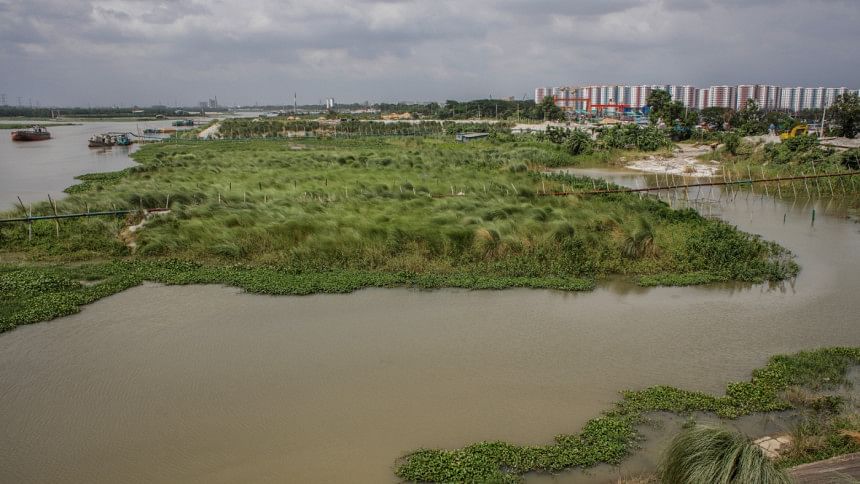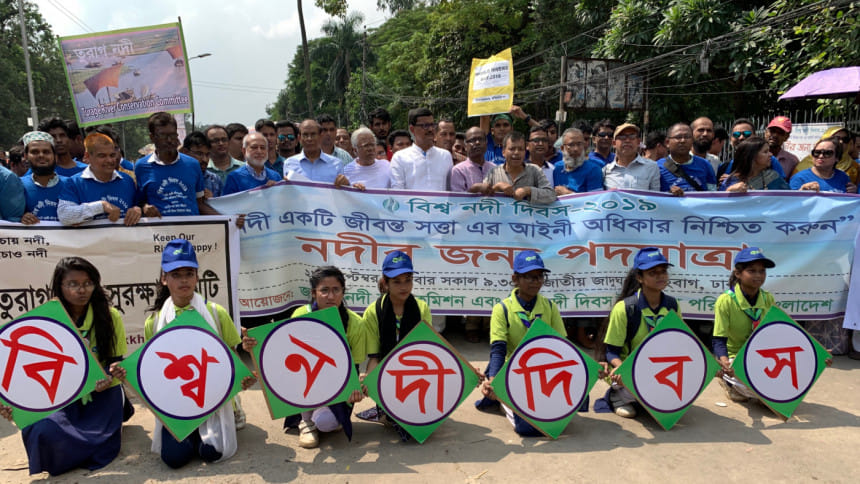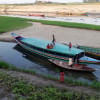No let-up in river grabbing

The country’s rivers and canals in sixty districts are in distress with at least 45,148 grabbers identified, according to official lists so far prepared by the respective deputy commissioners and submitted to the National River Conservation Commission.
Lists from the rest four districts -- Gaibandha, Panchagarh, Bagerhat and Mymensingh -- are due, said NRCC officials.
Of the country’s seven divisions, Chattogram has the highest number with 18,411 grabbers.
According to the lists, the illegal grabbing of these rivers and canals have been going on for ten to fifty-five years with concrete, semi-concrete and makeshift structures mostly used commercially by powerful quarters.
Though the local land administrative authorities intermittently carry out eviction drives, in most cases the grabbers go merrily making money at the cost of public property, thanks to a lack of fund, manpower and logistics of the authorities.
The total number of grabbers identified in thirteen districts of Dhaka division is 6,688 with the highest 1,843 in Faridpur, according to the lists.
The list of river grabbers in Dhaka district is still partial, said NRCC Chairman Muzibur Rahman Howlader.
“The river commission has already asked the DCs to undertake a year-long crash programme to evict the river grabbers in accordance with their lists,” he said. “They will get required funds from the land ministry.”
The DCs prepared the lists following the river commission’s formal request in February, he said.
Asked whether there is a conflict of interest in getting the lists made by the deputy commissioners, as they are the authorities who lease out river foreshores and flood plains of rivers, Howlader said legally they are the trustees of public property like rivers and are entrusted with taking care of it.

It is the DCs who have to identify and prepare the lists of land and river grabbers as per laws like State Acquisition and Tenancy Act, he said.
“For now, we are happy with the lists because this is the first time in the country’s history we have got such lists of river grabbers.”
The river commission will examine if there are any lapses and if any grabbers are found to have been left out, he added.
The lists have been submitted to the commission in phases over the past six months. The DCs got the lists done with the help of local assistant commissioners and upazila nirbahi officers.
DIVISION-WISE GRABBING
In eleven districts of Chattogram division, the total number of grabbers is 18,411 with the highest 5,906 in Cumilla, followed by 4,704 in Chattogram district.
In nine districts of Khulna division, the total number of river grabbers is 6,518 with the highest 3,134 in Kushtia district, and in four districts of Sylhet division, the total is 2,044.
In six districts of Barishal division, a total of 5,215 grabbers have been identified with the highest 2,272 in Barishal district. The total grabbers identified in six districts of Rangpur division is 2,154 with the highest 1,047 in Dinajpur.
In three districts of Mymensingh division, the number of river grabbers is 1,335, excluding those in Mymensingh district.
The High Court in a landmark verdict in February ordered the government to make a list of the grabbers and expose them by publishing the lists in the media.
According to the HC orders, the Election Commission is supposed to make the river grabbers ineligible for contesting any elections and the Bangladesh Bank is to make them ineligible for bank loans.
The court said playing any blind man’s buff over protection of rivers had to stop since the grabbers return and occupy rivers after their evictions.
Sources said the national river conservation commission, not having any executive power, has so far made only recommendations.
According to the law on which it was constituted, it cannot hold government officials accountable for ignoring river conservation. It, at best, can file cases against river grabbers and report to the HC on non-compliance of court orders.
The HC in a judgement in February had directed the government to amend the commission law and incorporate stringent provisions to empower the body.

 For all latest news, follow The Daily Star's Google News channel.
For all latest news, follow The Daily Star's Google News channel. 








Comments